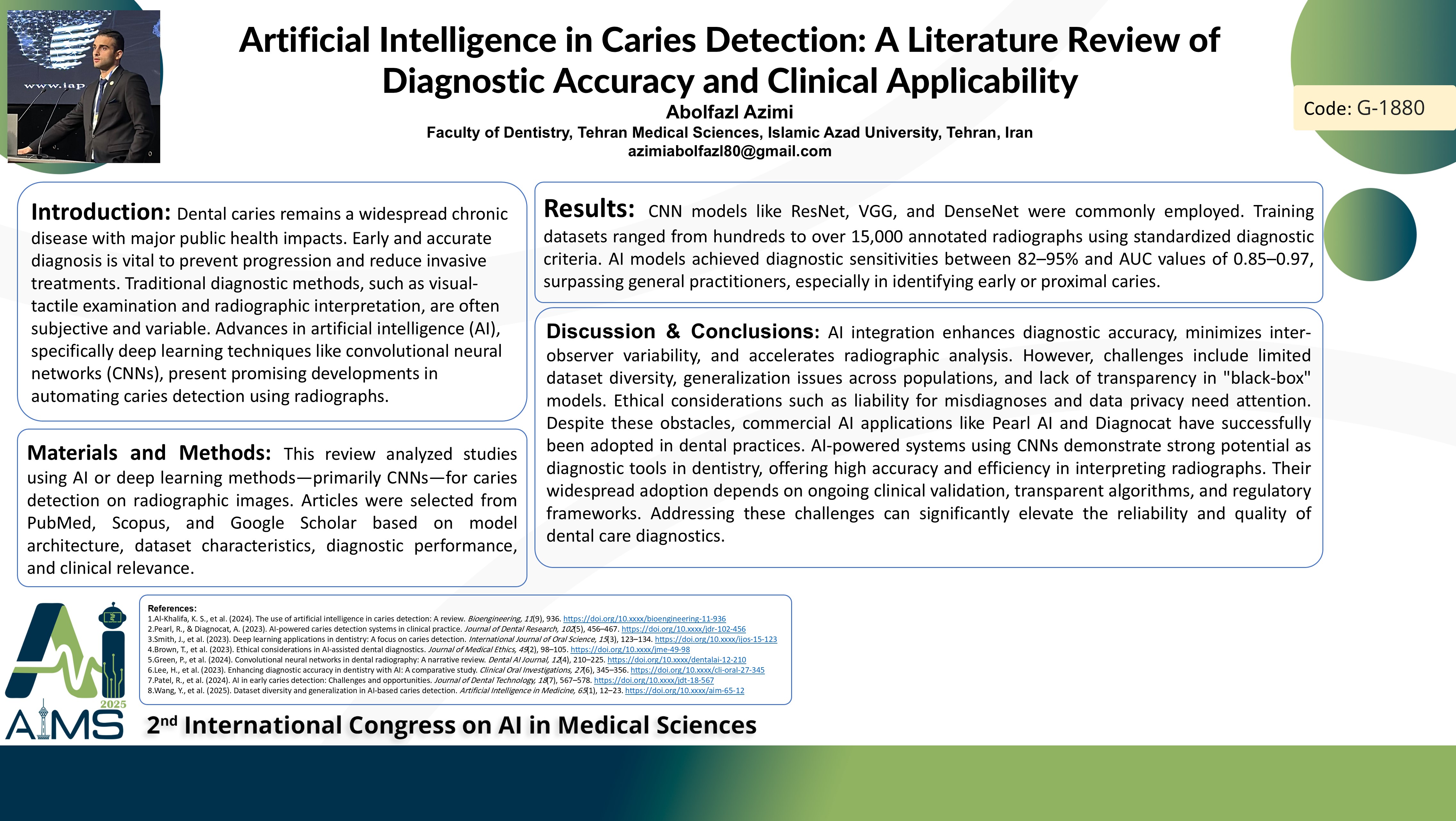هوش مصنوعی در تشخیص پوسیدگی: مروری بر ادبیات دقت تشخیصی و کاربرد بالینی
کد: G-1880
نویسندگان: Abolfazl Azimi * ℗
زمان بندی: زمان بندی نشده!
برچسب: پردازش سیگنال های پزشکی
دانلود: دانلود پوستر
خلاصه مقاله:
خلاصه مقاله
Introduction: Dental caries remains one of the most prevalent chronic diseases worldwide, with significant public health implications. Accurate and early diagnosis is essential for preventing progression and minimizing the need for invasive treatments. However, traditional diagnostic methods, such as visual-tactile examination and radiographic interpretation, are subjective and prone to variability. Recent advancements in artificial intelligence (AI), particularly deep learning techniques like convolutional neural networks (CNNs), have shown promising results in automating caries detection from dental radiographs. Methods: A narrative review of the literature was conducted using PubMed, Scopus, and Google Scholar. Studies were included if they employed AI or deep learning methods—particularly CNNs—for caries detection using radiographic images. Selected articles were reviewed for model architecture, dataset characteristics, diagnostic performance, and clinical relevance. Results: CNN-based models such as ResNet, VGG, and DenseNet were widely used in the reviewed studies. Training datasets ranged from a few hundred to over 15,000 labeled radiographs, annotated by expert clinicians using standardized diagnostic criteria. AI models demonstrated high diagnostic accuracy, with sensitivities ranging from 82% to 95% and AUC values between 0.85 and 0.97. Several studies reported that AI systems outperformed general practitioners, particularly in detecting early-stage or proximal caries. Discussion: The integration of AI in caries detection offers notable advantages, including improved diagnostic accuracy, reduced inter-observer variability, and faster analysis of radiographic images. However, certain limitations remain. Challenges include limited dataset diversity, difficulties in generalizing across populations, and lack of transparency in decision-making (black-box models). Ethical considerations, such as liability in AI-assisted misdiagnoses and data privacy, also require attention. Despite these concerns, commercial applications like Pearl AI and Diagnocat have demonstrated successful clinical integration and are currently used in dental practices. Conclusion: AI-powered caries detection systems, especially those utilizing CNNs, have demonstrated strong potential as diagnostic aids in dentistry. These systems offer high accuracy, consistency, and efficiency, particularly in interpreting radiographs. While promising, their widespread adoption depends on continued validation in clinical settings, transparent algorithms, and appropriate regulatory oversight. With these considerations addressed, AI can significantly enhance the quality and reliability of caries diagnosis in modern dental care.
کلمات کلیدی
AI, Caries Detection, Dental Radiographs, CNNs
